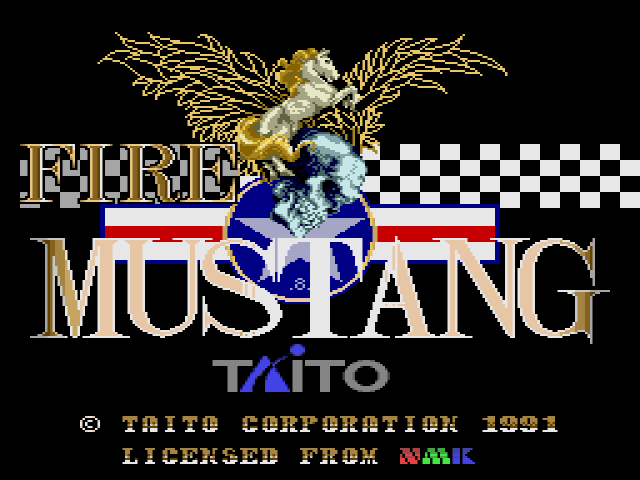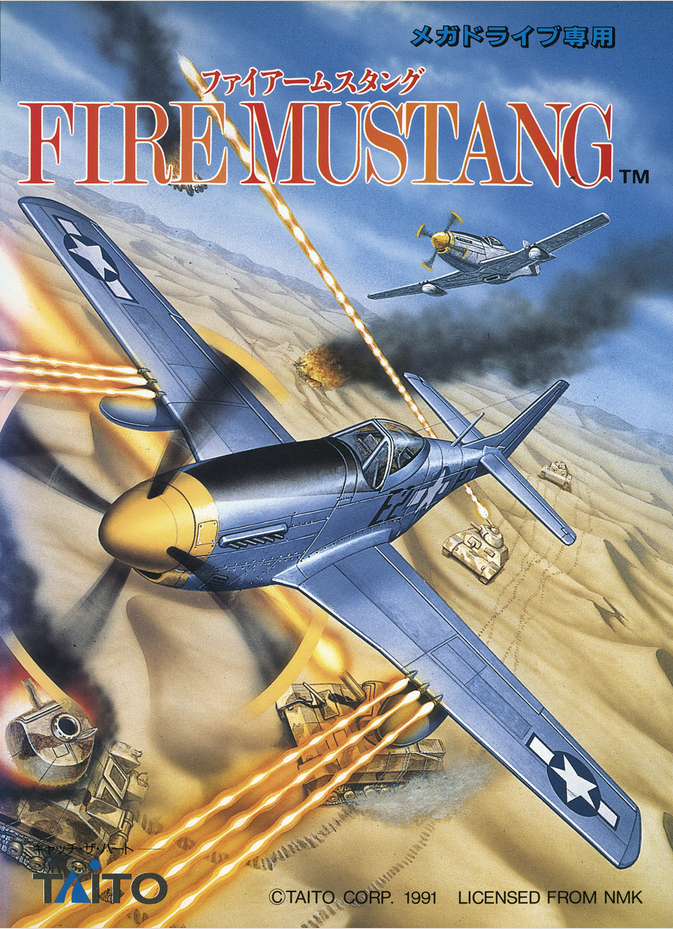
PUBLISHER: Taito
DEVELOPER: NMK
RELEASE DATE: 05/31/91 – (JP)
Believe it or not, dear readers, some less discerning retro gamers snub their noses at the Mega Drive. They consider the Yamaha sound chip’s gritty back-alley beats aggressive and ugly. The limited 512 color palette is too drab and washed out for their high-end tastes. Even the original three-button controller is declared to be bulky and uncomfortable in their weak hands.
These arguments are typical schoolyard trash-talk. Still, as with most insults lobbed in one’s direction, there is more truth here than Sega die-hards would care to admit. Look no further than today’s hot mess, Fire Mustang. The graphics are so pale and colorless, they look like they’ve been baking in the sun for months on end. The music lacks any rhythm, syncopation or worthwhile melody. Worse yet, Fire Mustang is yet another mediocre shoot-em-up on a console replete with mediocre shoot-em-ups. Not only is the game not a selling point for Sega’s most popular system, but it truly has no reason to exist.
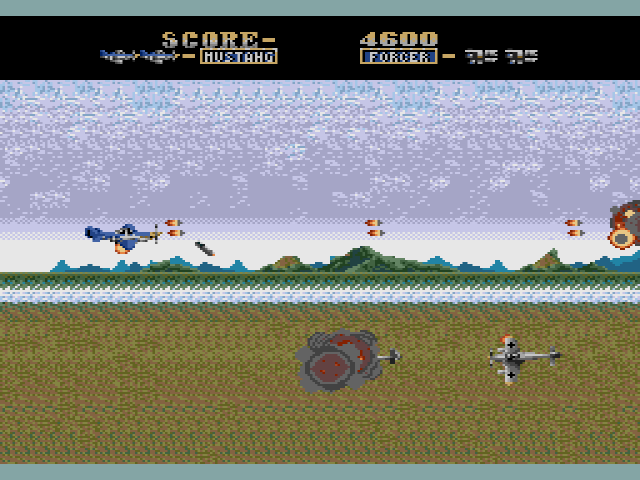
Fire Mustang places you in the cockpit of a P-52 Mustang, smack dab in the middle of World War II. Germany and Japan are up to no good, so shoot to kill. Your Mustang comes equipped with a standard double shot, a bomb that drops from beneath you, and a screen-clearing attack known as “The Forcer.” Helicopters and occasional large planes can be shot down for weapon upgrades or extra Forcer attacks; you only have a limited amount of the latter, so use only when the enemies overcrowd your personal space.
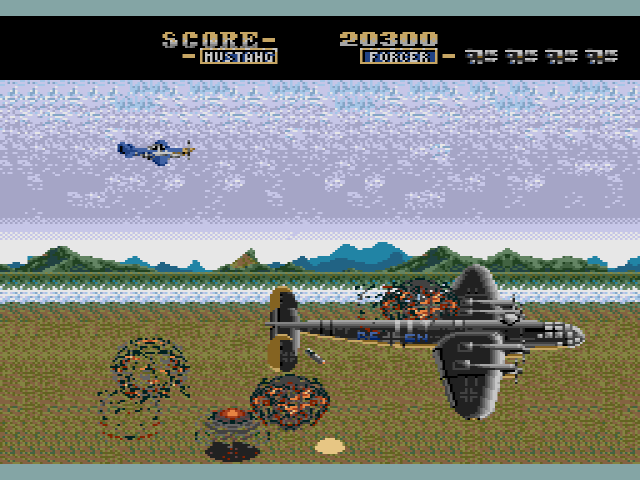
Each of the game’s missions seems to be based on an actual mission from World War II, although according to Sega Retro, some of the dates are inaccurate. This might annoy history buffs, but I’m not a WWII historian, so it doesn’t matter to me. The skewed chronology doesn’t affect the gameplay in the slightest, either. Whether you’re deep within in the deserts of Algeria or cruising near Truck Island, your objective remains the same: shoot every dad-blamed plane out of the sky or the Great War is lost.
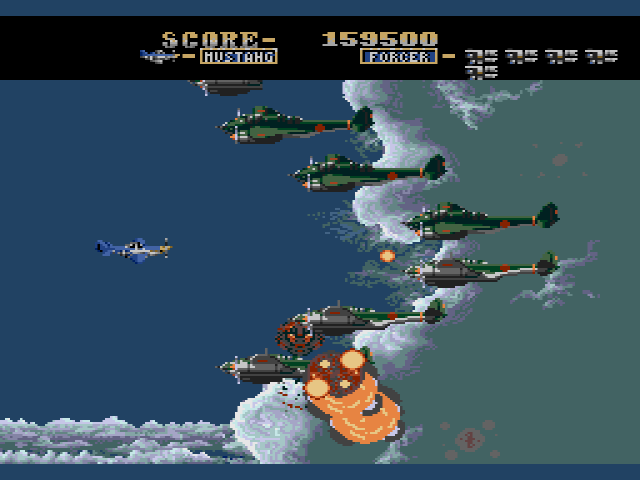
The shooting is fine and forgettable. Hold the ‘C’ button to rapid-fire and watch as your foes are destroyed. The ‘B’ button unleashes the Forcer attack. Not much strategy here. For extra challenge, I suppose you could tap ‘A’ and single-shot through the entire War until your fingers are numb.
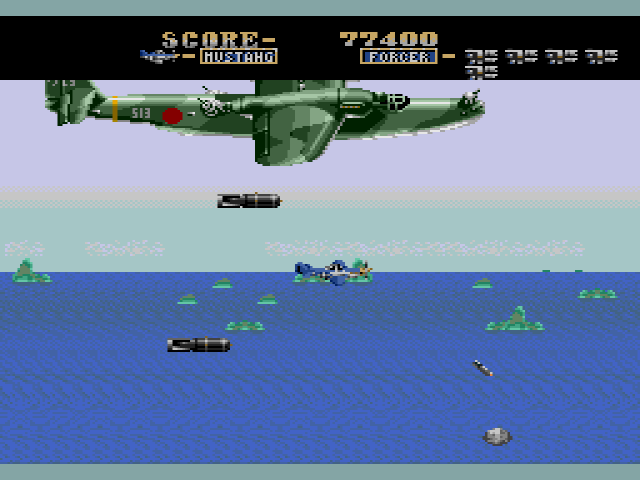
The first three missions are ridiculously easy, particularly if your main attack is upgraded. Just keep shooting the right side of the screen and you won’t even see many planes emerge past your onslaught. Once mission four arrives, however, the Germans and Japanese get wise to your rapid-fire ways and counter with their own orange bullet spray. Avoiding this was, for me, impossible enough that I eventually gave up. Send in another P-52 Mustang, boys, this one’s enjoying his retirement at the bottom of the Pacific Ocean.
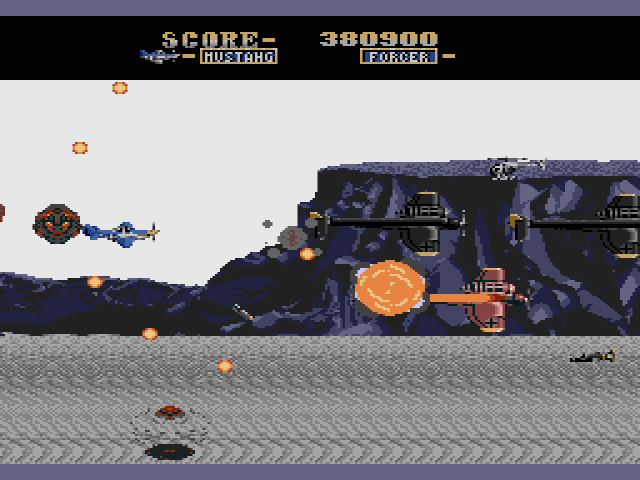
Fire Mustang‘s banal presentation combined with its uninspired shooting makes for quite the depressing outing. While the game is playable, there is nothing here to recommend for fans of the genre. On the contrary, there is plenty here to encourage Mega Drive detractors to continue down their path of verbal destruction and hatred. Look what horror you’ve wrought, Fire Mustang. I hope you’re happy.
D
NMK
Fire Mustang developers, NMK, are mostly known for their arcade shoot-em-ups and Famicom/NES games. While the bulk of their titles released exclusively in Japan, American gamers may have played the company’s solid B-tier NES titles, Arkista’s Ring and Ninja Crusaders. Interestingly, Fire Mustang was NMK’s one and only Mega Drive title. Whether this was due to the game’s low sales or the Japanese public’s general lack of interest in the Mega Drive is unknown. NMK is one of a handful of companies who only developed one Mega Drive game before moving on to other platforms. After years of developing primarily for arcades, they went bankrupt in 1999.

